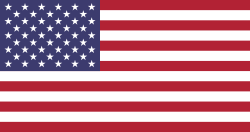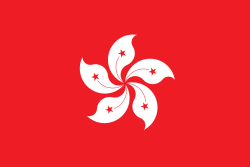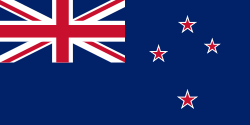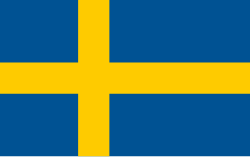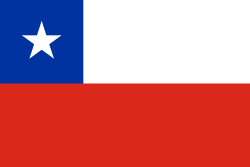Tommy Ho
| Tommy Ho | |||||||||||||
| Nation: | |||||||||||||
| Geburtstag: | 17. Juni 1973 | ||||||||||||
| Größe: | 183 cm | ||||||||||||
| Gewicht: | 77 kg | ||||||||||||
| 1. Profisaison: | 1988 | ||||||||||||
| Spielhand: | Links | ||||||||||||
| Trainer: | Rick Macci | ||||||||||||
| Preisgeld: | 793.819 US-Dollar | ||||||||||||
| Einzel | |||||||||||||
| Karrierebilanz: | 36:66 | ||||||||||||
| Höchste Platzierung: | 85 (26. Juni 1995) | ||||||||||||
| |||||||||||||
| Doppel | |||||||||||||
| Karrierebilanz: | 57:40 | ||||||||||||
| Karrieretitel: | 4 | ||||||||||||
| Höchste Platzierung: | 13 (8. Januar 1996) | ||||||||||||
| |||||||||||||
| Mixed | |||||||||||||
| |||||||||||||
| Quellen: offizielle Spielerprofile bei der ATP/WTA (siehe Weblinks) | |||||||||||||
Thomas „Tommy“ Ho (* 17. Juni 1973 in Winter Haven, Florida) ist ein ehemaliger US-amerikanischer Tennisspieler.
Leben
Ho trat im Alter von 15 Jahren bei den US Open 1988 an, schied jedoch in der ersten Runde aus. Kurz darauf gewann er in Rye Brook sein erstes Match auf der ATP World Tour. Im Einzel war er deutlich weniger erfolgreich als im Doppel; allerdings gelangen ihm auf der ATP Challenger Tour zwischen 1990 und 1995 vier Einzeltitel. Den Höhepunkt seiner Karriere erlebte er in den Jahren 1994 und 1995, beginnend mit dem Doppeltitel von Peking an der Seite von Kent Kinnear. Mit wechselnden Partnern gewann er 1995 das Masters-Turnier von Indian Wells, den Doppeltitel von Hongkong und verteidigte den Titel in Peking. Beim International Series Gold-Turnier von Memphis stand er im Finale, zudem erreichte er das Halbfinale der Doppelkonkurrenz der French Open, wo er an der Seite von Brett Steven gegen die späteren Champions Jacco Eltingh und Paul Haarhuis glatt in zwei Sätzen verlor. Seine höchste Notierung in der Tennis-Weltrangliste erreichte er 1995 mit Position 85 im Einzel sowie 1996 mit Position 13 im Doppel.
Eine Rückenverletzung zwang Ho zum Rücktritt vom Tennissport.[1]
Erfolge
| Legende |
| Grand Slam |
| Tennis Masters Cup |
| ATP Masters Series (1) |
| ATP International Series Gold |
| ATP International Series (3) |
| ATP Challenger Tour (8) |
Einzel
Turniersiege
| Nr. | Datum | Turnier | Belag | Finalgegner | Ergebnis |
|---|---|---|---|---|---|
| 1. | 15. Oktober 1990 | Hartplatz | 7:6, 6:4 | ||
| 2. | 14. Dezember 1992 | Hartplatz | 4:6, 6:4, 7:6 | ||
| 3. | 19. September 1994 | Hartplatz | 6:3, 6:4 | ||
| 4. | 27. Februar 1995 | Hartplatz | 6:7, 7:6, 6:2 |
Doppel
Turniersiege
ATP Tour
| Nr. | Datum | Turnier | Belag | Partner | Finalgegner | Ergebnis |
|---|---|---|---|---|---|---|
| 1. | 23. Oktober 1994 | Teppich (i) | 7:6, 6:3 | |||
| 2. | 13. März 1995 | Hartplatz | 6:4, 7:6 | |||
| 3. | 23. April 1995 | Hartplatz | 6:1, 6:7, 7:6 | |||
| 4. | 22. Oktober 1995 | Teppich (i) | 7:6, 7:6 |
Challenger Tour
| Nr. | Datum | Turnier | Belag | Partner | Finalgegner | Ergebnis |
|---|---|---|---|---|---|---|
| 1. | 26. April 1993 | Hartplatz | 6:4, 7:6 | |||
| 2. | 6. Dezember 1993 | Hartplatz | 2:3 aufgg. | |||
| 3. | 6. Juni 1994 | Sand | 6:3, 6:1 | |||
| 4. | 13. Juni 1994 | Sand | 7:6, 6:1 |
Finalteilnahmen
| Nr. | Datum | Turnier | Belag | Partner | Finalgegner | Ergebnis |
|---|---|---|---|---|---|---|
| 1. | 13. Februar 1995 | Hartplatz (i) | 6:4, 6:7, 1:6 | |||
| 2. | 6. November 1995 | Hartplatz (i) | 4:6, 6:3, 3:6 | |||
| 3. | 1. Januar 1996 | Hartplatz | 5:7, 6:7 |
Einzelnachweise
- ↑ The Ledger (englisch)
Weblinks
- ATP-Profil von Tommy Ho (englisch)
- ITF-Profil von Tommy Ho (englisch)
- Davis-Cup-Statistik von Tommy Ho (englisch)
| Personendaten | |
|---|---|
| NAME | Ho, Tommy |
| ALTERNATIVNAMEN | Ho, Thomas (vollständiger Name) |
| KURZBESCHREIBUNG | US-amerikanischer Tennisspieler |
| GEBURTSDATUM | 17. Juni 1973 |
| GEBURTSORT | Winter Haven, Florida |
Auf dieser Seite verwendete Medien
Pictograms of Olympic sports - Tennis. This is unofficial sample picture. Images of official Olympic pictograms for 1948 Summer Olympics and all Summer Olympics since 1964 can be found in corresponding Official Reports.
Flag of Canada introduced in 1965, using Pantone colours. This design replaced the Canadian Red Ensign design.
Flagge des Vereinigten Königreichs in der Proportion 3:5, ausschließlich an Land verwendet. Auf See beträgt das richtige Verhältnis 1:2.
Flagge des Vereinigten Königreichs in der Proportion 3:5, ausschließlich an Land verwendet. Auf See beträgt das richtige Verhältnis 1:2.
Verwendete Farbe: National flag | South African Government and Pantone Color Picker
| Grün | gerendert als RGB 0 119 73 | Pantone 3415 C |
| Gelb | gerendert als RGB 255 184 28 | Pantone 1235 C |
| Rot | gerendert als RGB 224 60 49 | Pantone 179 C |
| Blau | gerendert als RGB 0 20 137 | Pantone Reflex Blue C |
| Weiß | gerendert als RGB 255 255 255 | |
| Schwarz | gerendert als RGB 0 0 0 |
Flag of Australia, when congruence with this colour chart is required (i.e. when a "less bright" version is needed).
See Flag of Australia.svg for main file information.Chinese Taipei Olympic Flag. According to the official website of Chinese Taipei Olympic Committee, Blue Sky(circle) & White Sun(triangles) above the Olympic rings is neither the National Emblem of the Republic of China, nor the Party Emblem of Kuomintang (KMT), but a design in between, where the triangles do not extend to the edge of the blue circle, as registered at International Olympic Committee in 1981 and digitally rendered in 2013. Besides, the blue outline of the five-petaled plum blossom is broader than the red one. Moreover, the CMYK code of the blue one and the Blue Sky & White Sun is "C100-M100-Y0-K0", and different from the Olympic rings (C100-M25-Y0-K0). Note that it's the only version recognized by IOC.
Chinese Taipei Olympic Flag. According to the official website of Chinese Taipei Olympic Committee, Blue Sky(circle) & White Sun(triangles) above the Olympic rings is neither the National Emblem of the Republic of China, nor the Party Emblem of Kuomintang (KMT), but a design in between, where the triangles do not extend to the edge of the blue circle, as registered at International Olympic Committee in 1981 and digitally rendered in 2013. Besides, the blue outline of the five-petaled plum blossom is broader than the red one. Moreover, the CMYK code of the blue one and the Blue Sky & White Sun is "C100-M100-Y0-K0", and different from the Olympic rings (C100-M25-Y0-K0). Note that it's the only version recognized by IOC.
Flagge Portugals, entworfen von Columbano Bordalo Pinheiro (1857-1929), offiziell von der portugiesischen Regierung am 30. Juni 1911 als Staatsflagge angenommen (in Verwendung bereits seit ungefähr November 1910).
Das Bild dieser Flagge lässt sich leicht mit einem Rahmen versehen
Flag of Hong Kong (1959–97). Granted on 21 January 1959, used until 30 June 1997

